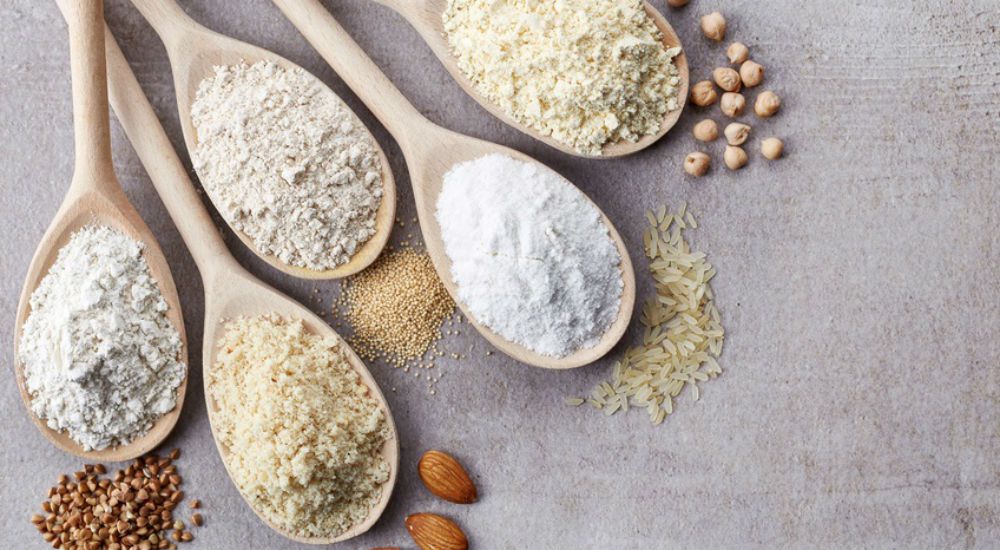

Wholemeal flour, coconut flour, gluten-free flour, etc. What is the best flour for your recipe, and more importantly, for your health? Let's see.
Wheat flours
White or all-purpose wheat flour is the least interesting. Whole wheat flour contains more fibre because it contains the bran. However, whole wheat flour is even more nutritious. All parts of the kernel have been preserved. It should be kept in a cool place since it is also the most perishable of the three.
Gradually get used to eating whole wheat or wholemeal flour: start by replacing 25% of the white flour in your usual recipes and then increase the proportion to 50%.
Spelt and Kamut (or Khorasan wheat) are wheat varieties to be discovered for their delicious hazelnut flavour. They are very nutritious in the form of wholemeal flours. Spelt should be mixed with wheat flour. This latter is lower in gluten and produces a denser product.
Naturally gluten-free flours
No gluten-free flour can completely replace wheat flour in a recipe. If the recipe contains less than 500 ml (2 cups) of flour, the substitution will be easier and the result more appreciated. For nutritional benefits, 15 to 33% of the total amount of flour can usually be substituted, depending on the flour's taste.
Since each gluten-free flour has its own texture characteristics, it is often best to make blends. Besides, binding agents such as gums (xanthan and/or guar) should be added to create a texture similar to a regular product.
Coconut flour and legume flours(chickpeas, soy, lupin, lentils, beans...)
These are the ones that contain the most dietary fibre, but also the most protein. For example, soy flour contains more than 50% of proteins! They are also a good source of iron. Except for lentil flour, most have a more pungent taste.
flour or coconut flour, as they absorb more moisture.
Note that coconut flour is usually defatted and should not make up more than 15 and 25% of an all-purpose mixture. Be careful with soy flour as well. If it is not labelled "defatted", it is perishable. We also suggest lowering the oven temperature by 25 °F since it browns more quickly.
Almond flour
Rich in proteins and calcium, and monounsaturated fats, almond flour is beneficial to good cardiovascular health. It is preferable to keep it cold to avoid rancidity.
Quinoa, buckwheat and uncontaminated organic oats
These three flours are rich in soluble fibre, which better manages blood sugar and cholesterol levels.
Quinoa also contains better quality proteins, but it has a bitter taste if used in too large quantities. Do not exceed 25% of the total mixture.
Buckwheat flour is well known for making pancakes and cakes. The darker the buckwheat flour, the stronger the taste. Green buckwheat flour is excellent for making bread but should not exceed 10-15% of the total flour.
As for oats, they can be used in a more significant proportion, being milder to the taste.
Rice flour
It is the most widely used gluten-free flour. It has the advantage of having a neutral taste. Brown rice flour is preferred because it is richer in fibre than white rice flour, and the result will be similar. Do not exceed one-third of the total flour mixture to obtain a less granular product.
All-purpose" or "1:1" gluten-free flours
These mixes allow you to replace 100% wheat flour in your traditional baking recipes. For bread, it's best to go for blends designed explicitly for gluten-free baked goods.
To discover other flours, get our GLUTEN-FREE book in our online store or our clinics.
References
Farines sans gluten
Cuisine Angélique
La Milanaise
L'Épicerie: de farines et de fibres
Image source: bioalaune